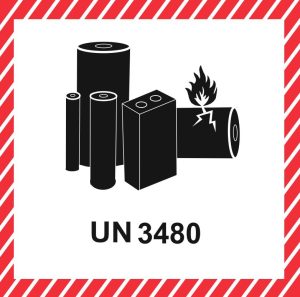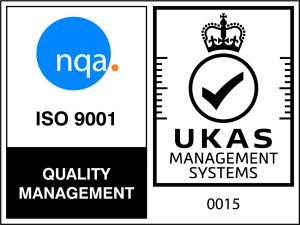As technology continues to advance, the demand for lithium batteries has skyrocketed. From smartphones to electric vehicles, these powerful energy sources are an integral part of our daily lives. However, when it comes to shipping lithium batteries internationally, there are crucial regulations and safety factors that must be considered. In this guide, we will explore the dangers of shipping lithium batteries, the regulations surrounding their transportation, as well as best practices for shipping lithium batteries safely.
Understanding the dangers of shipping lithium batteries
Lithium batteries, while efficient power sources, come with inherent risks. One of the main dangers lies in their potential of thermal runaway, where the battery enters and uncontrollable self-heating state leading it to overheat and ignite, producing fires or explosions. This risk is particularly heightened during transportation, as various factors such as temperature fluctuations and physical damage can trigger these hazardous events. It is crucial to comprehend these risks in order to mitigate them effectively during the shipping process.
Can I ship lithium batteries? Exploring regulations and restrictions
When it comes to shipping lithium batteries internationally, it is important to comply with the regulations set by regulatory authorities such as the International Civil Aviation Organization (ICAO), the International Air Transport Association (IATA), the agreement concerning the International Carriage of Dangerous Goods by Road (ADR) and the International Maritime Dangerous Goods code (IMDG). These regulations aim to ensure the safe transportation of lithium batteries and minimize the risks associated with their shipment.
The regulations surrounding the transportation of lithium batteries depend on various factors, including the type of battery, its capacity, and whether it is shipped alone, packed with, or installed in a device. For example, via air, lithium metal and lithium-ion batteries are prohibited from being shipped as standalone items on passenger aircraft although they can be shipped on cargo aircraft when packed in accordance with Packing Instruction 965. While lithium metal and ion batteries contained in or packed with equipment are allowed via air subject to restrictions including weight and watt-hours. It is crucial to consult the specific mode of transport regulations including any Special Provisions and State and Operator variations that may exist.
Types of lithium batteries
To ensure safety, it is essential to classify lithium batteries properly before shipping. There are two main types: lithium metal batteries and lithium-ion batteries. Lithium metal batteries are non-rechargeable and are commonly found in watches and calculators. On the other hand, lithium-ion batteries are rechargeable and are used in smartphones, laptops, and electric vehicles. Both types have specific regulations and restrictions when it comes to shipping.

Shipping lithium-ion batteries: Understanding Battery Classification
It is important to adhere to the guidelines laid out in the relevant mode of transport regulations to ensure the safe transportation of these devices.
Lithium batteries are classified in Class 9 – Miscellaneous dangerous goods as:
UN 3090, Lithium metal batteries; or
UN 3480, Lithium-ion batteries
or, if inside a piece of equipment or packed separately with a piece of equipment to power that equipment as:
UN 3091, Lithium metal batteries contained in equipment; or
UN 3091, Lithium metal batteries packed with equipment
UN 3481, Lithium-ion batteries contained in equipment; or
UN 3481, Lithium-ion batteries packed with equipment.
There are a number of different packing instructions within each mode of transport regulations relating to the UN numbers above. The packing instructions inform the shipper how to correctly pack the specific battery. An explanation of UN numbers and their relating packing instructions can be found in our article Beginners Guide to Lithium Battery regulations.
Additionally a demonstration example of how to safely pack a battery classified as UN 3480 can be seen in this video.
When shipping lithium batteries, it is important to ensure that the package is clearly labelled to indicate the presence of lithium batteries. This allows the shipping company and the relevant authorities to handle the package with the necessary precautions. Failure to properly label the package can result in fines, delays or even the package being rejected for shipment.

Choosing the right courier for shipping lithium batteries
When it comes to shipping lithium batteries, choosing the right courier is of utmost importance. Not all courier services accept lithium batteries due to the associated risks and regulations. Therefore, it is crucial to research and select a courier that is experienced in handling the transportation of lithium batteries.
Some well-known couriers, such as FedEx, UPS and Royal Mail, do offer shipping services for lithium batteries. However, it is important to check their specific guidelines and restrictions before proceeding with the shipment. Additionally, there are specialised courier services that focus specifically on shipping hazardous materials, including lithium batteries. These couriers have the expertise and knowledge to ensure the safe and compliant transportation of these batteries.
Before shipping with any of these couriers, it is recommended to contact their customer service or visit their website to obtain the most up-to-date information regarding their lithium battery shipping policies. This will help you understand the specific requirements and restrictions imposed by each courier and allow for a smooth shipping process.
Conclusion: Ensuring safe and compliant shipping of lithium batteries
Shipping lithium batteries internationally requires a thorough understanding of the dangers, regulations, and best practices associated with their transportation. By adhering to the guidelines provided by the dangerous goods regulations and couriers, as well as following proper packaging procedures, you can ensure the safe and compliant shipping of lithium batteries.
Always remember when consulting the specific modal regulations to also refer to any special provisions, state of origin and state of the operator requirements listed for the country you are shipping from and to. By taking the necessary precautions with packaging and selecting the appropriate courier, you can ship lithium batteries with confidence, knowing that you have minimized risks and ensured the safe arrival of your shipment.
As suppliers of packaging for lithium batteries, we can help you find the right box for your battery. Contact our team today. We are here to help you navigate the complexities of lithium battery packaging to ensure the safe transportation of your valuable items.
Read our ‘beginners guide to lithium batteries regulations’ here.
Information correct at time of publishing, 1st November 2023.
Source IATA, ADR & IMDG
 UK
UK


